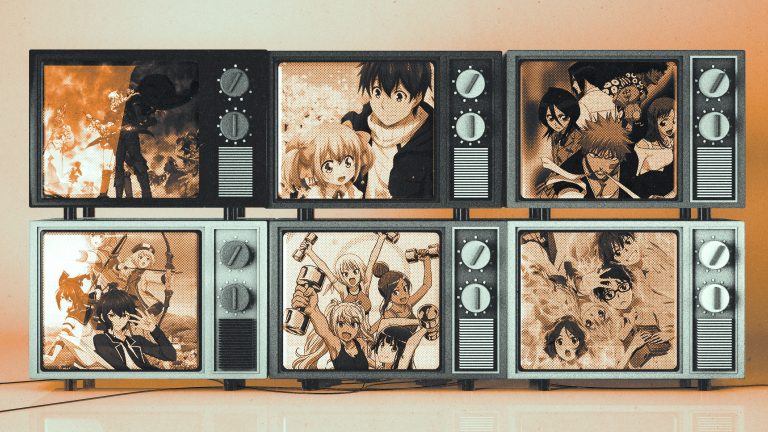Ashwath Nair’s obsession with anime started in the early ’90s, when the anime show Robotech first aired on an Indian television channel. Over the years, he fell in love with the diverse genres, complex storylines, cinematography, and the unique art style of anime.
But at the time, Indian TV channels aired only a couple of hours of anime per day, and choices were limited to mainstream titles. Fans like Nair had no option but to rely on piracy websites. “We started sailing the high seas and being absolute online pirates,” Nair, now a 36-year-old photographer and filmmaker, told Rest of World.
Over the next decade, piracy grew as anime floundered on Indian TV due to expensive licensing for such content, objections to its mature themes, and increased censorship in the country.
More recently, Indian anime fans have found another option: Crunchyroll, the world’s largest anime-streaming platform, has made a big push in the Indian market over the past two years.
In October 2022, Crunchyroll opened an office in Mumbai and hired a team to focus on building an anime community in the country. To increase brand awareness, Crunchyroll co-sponsors all five Comic Cons held in India; last July, it hired Bollywood actors Tiger Shroff and Rashmika Mandanna as brand ambassadors. The San Francisco-headquartered company is now setting up its second India office — in the southern city of Hyderabad.
“We have essentially been in the market for two years. Indian audiences have been extremely receptive to our offering,” Crunchyroll president Rahul Purini told Rest of World. “We’re excited about the market, and the opportunity we see … We are bringing somewhere between 25 to 40 series every quarter [to India] — all of that makes it all a very attractive value proposition.”
Crunchyroll declined to share the number of its current subscribers in India. Between January 1 and July 17, Crunchyroll’s mobile app had 46,000 monthly active users in India, compared to 29,000 in all of 2021, according to data from market insights firm Sensor Tower.
Once considered a niche genre, anime has grown in popularity across the world in recent years. Between 2020 and 2022, the global demand for anime content grew 118%, making it one of the fastest-growing content genres.
India’s anime market is expected to surpass $5 billion by 2032, according to Polaris Market Research. “Traditionally popular among manga enthusiasts and otaku communities, anime has now gained mainstream popularity in India, thanks to the availability of diverse titles on streaming platforms like Netflix, Amazon Prime Video, and Crunchyroll,” the market research firm said in a June 2024 industry insights report.
“Traditionally popular among manga enthusiasts and otaku communities, anime has now gained mainstream popularity in India.”
Crunchyroll started as an illegal hosting service in 2006 and acquired licenses to legally stream shows in 2009. Sony bought the company in 2020. Crunchyroll currently has over 2,000 anime titles in its global catalog, and 15 million paid subscribers, according to the company. It also dubs some of its content in more than 10 languages for different countries.
In India, Crunchyroll has around 800 shows — far more than what is available on mainstream digital content platforms like Netflix and Prime Video. But several blockbuster series like Naruto are not available on the platform in India, and some other popular titles are only partially available because Crunchyroll doesn’t have exhaustive regional distribution rights.
In a bid to reach a wider Indian audience, Crunchyroll has dubbed more than 80 shows in Hindi, Telugu, and Tamil, Purini said. The decision is paying off: Dubbed titles contribute to over 65% of Crunchyroll’s total viewership in India, according to the company.
But the dubbing on platforms like Crunchyroll is “below average due to poor scripting and execution,” Deven Gupta, an administrator for the Delhi Anime Club, a community that organizes events and meetups for anime and manga fans, told Rest of World. Gupta said he recently canceled his Crunchyroll subscription after Netflix started adding more anime titles.
Crunchyroll works with various local partners “that have deep localization expertise and [a] very broad voice actor pool” for dubs, Purini said.
“Localized subtitling and dubbing is something that we believe is critical in facilitating an emotional connection to anime. We’re proud of the production and voice actors we work with to bring this craft to screens big and small,” Purini said in a statement after this story was published.
A monthly subscription for Crunchyroll in India starts at 79 rupees (94 cents), one of the cheapest in the world, according to the company. In June, the company partnered with Prime Video: Now, Prime subscribers can watch Crunchyroll as a channel within the app.
“There has been a subscription or streaming subscription fatigue,” Purini said, acknowledging that some customers are disinclined to sign up for multiple streaming services.
Over the past year, other companies, too, have started making a push for anime in India. In March, Indian telecom major Airtel struck a deal with Sony Yay to run Anime Booth, a 24/7 Hindi-language TV channel with a handful of popular shows, on Airtel Digital TV. In May, Indian streaming platform JioCinema launched a dedicated section on its app, called “Anime Hub,” which offers around 60 titles.
Next, Crunchyroll plans to produce anime shows based on Indian characters, themes, and stories. The company will work with Japanese creators for this content, Purini said. Filmmaker Nair said producing content targeted at Indian audiences in Japan seemed practical. In Japan, “anime studios function at a very rapid pace,” he said.
Crunchyroll also plans to design and produce anime merchandise for India.
“You will see some of our IP merch come out here very soon,” Purini said. “The fans love to wear their fandom on their sleeves.”



